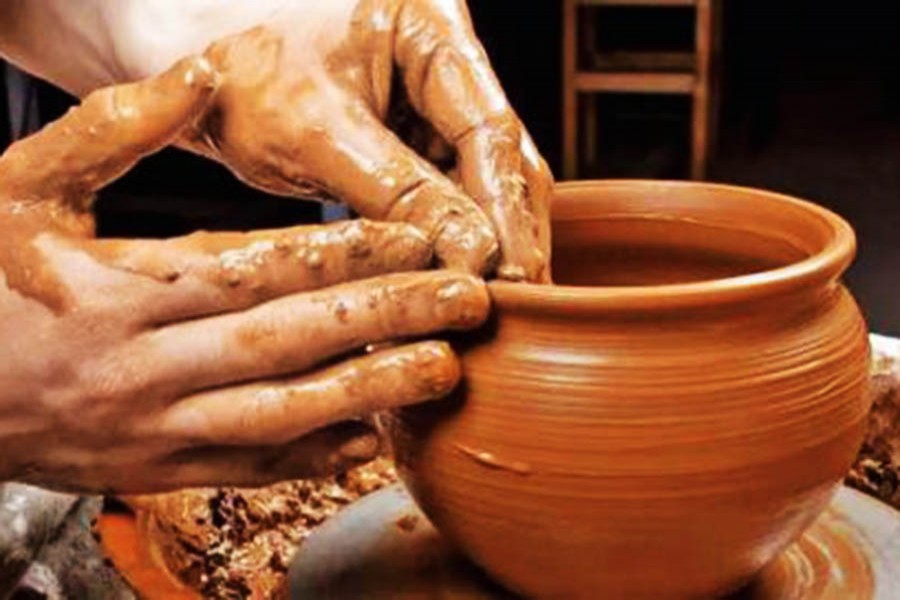Potters are now a marginalised community. Their main product earthenware has long lost its demand. Pottery artifacts adorn the drawing rooms of a particular class of people and therefore enjoy a limited market mainly in the capital city and other cities. Finely crafted clay flower vases can rival those made from ceramic. But not all potters are capable of making those. Some of them make idols that are worshipped by some religious communities. The occasions of such religious festivals are seasonal. Yet this is a very good source of income for the artisans where their works enjoy a substantial demand.
Clearly pottery as a traditional handicraft is facing threat of extinction. But what has led to this situation should have given a cause for serious concern. Aluminum pots and pans have replaced those of the earthen types used earlier for cooking. Then plastic appears on the scene to elbow out most of the earthen pots and pitchers. Lighter, cheaper and not developing cracks or breaking as easily as the earthen pots and pans, the plastic replacements are highly convenient for use. But the plastic invasion has been so pervasive that the material has found its place into the belly of sea creatures including the largest mammal, whale. The amount of plastic found in their stomachs is as high as 40 kgs recorded in a dead whale on a beach of the Philippines.
Plastic use is increasing in a much higher proportion to the decline in the use of earthenware. So it is possible that the potters will lose their livelihoods to plastic. In the rural areas and small towns, potters are struggling to stay in their traditional occupation. Small pitchers used for collection of date juice, large containers in which molasses of sugarcane is stored and pot used for preparing curd or yoghurt have yet to be replaced by their plastic counterparts. The commercial dairy industry, however, uses plastic containers for preparation of yoghurt. Earthen flowerpots or tubs have already been replaced and some versions have a rope-like hanging device. To make the matter worse, the bakeries have started using airtight plastic containers for selling their products. Some of these containers are quite hardy and can be used for other purposes later on. Then there are one-time pots, plates, glass, spoons which are now used randomly just to avoid the inconvenience of cleaning the traditional varieties used just a decade or two ago.
Human civilization is focusing on personal hygiene and convenience at the expense of the environment and the ecosystem. Promotion of the plastic industry may soon prove suicidal. Had the pottery been promoted instead, the environment and the bio-diversity balance would not turn so fragile as of today. Plastic, together with polythene has posed an oversize and unmitigated threat to water source and land for crop production and in its turn to the food security in the future.
The cost of convenience and so-called hygienic concern may be heavy for the future generation. Already, the climate change has started exhibiting erratic patterns of seasonal variations ---at times bringing about significant reversals to the so long accepted benefits of weather. If the climate is in further turmoil because of pernicious human activities societies could avoid if they so desired, life and living will really hang in the balance on this planet. The comfort zone, the rich and superrich are enjoying today may disappear before they become aware of the disaster. It would be desirable to make the lifestyle simpler than making it complicated and cosier, otherwise the planet will turn uninhabitable. Our traditional artisans including potters provide an answer to the danger and disaster society is heading for.


